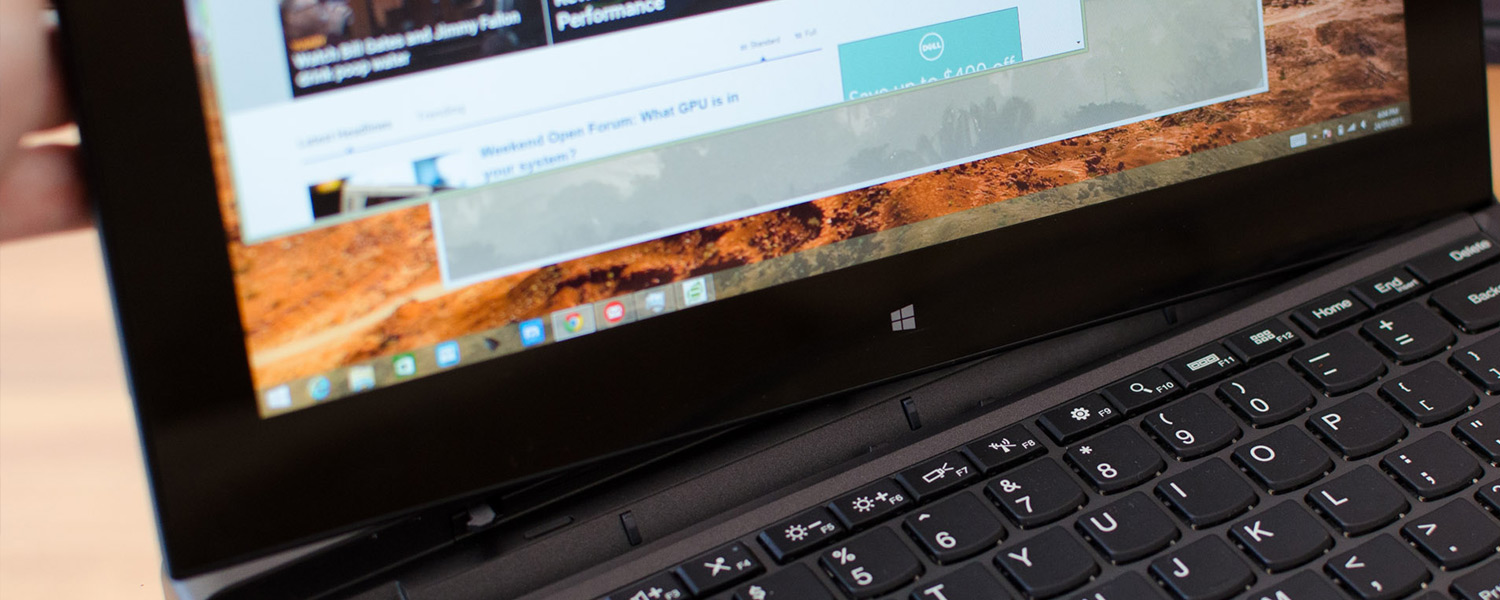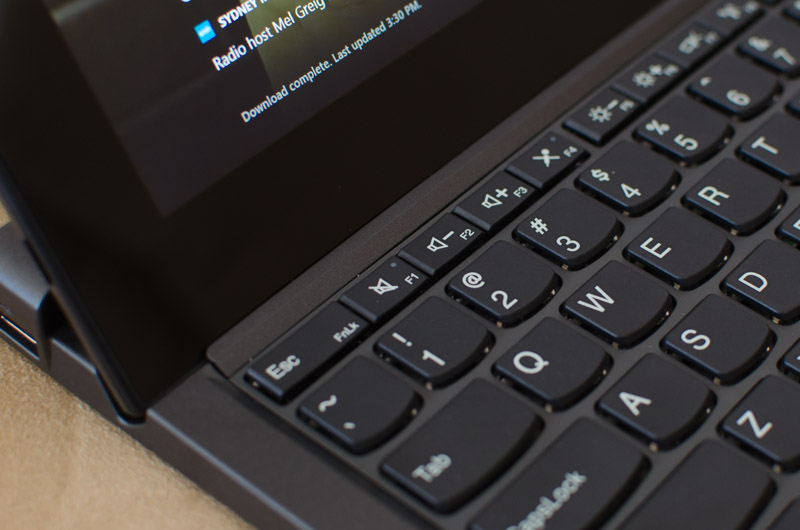Final Thoughts
I like the concept behind the ThinkPad Helix: a powerful, portable, business-oriented tablet with a reasonably large display that can be easily converted into a laptop on the go. With features like a fingerprint scanner and stylus, it's meant to present a good alternative to other convertibles like the Asus Transformer Book or Surface 3 Pro.
However I can't help but feel like Lenovo hasn't nailed the execution of this device, even in its second generation. Sure, there are numerous improvements in many areas, but it's still well short of being an ideal business grade tablet-laptop convertible.
Most of the issues I have with this system revolve around the keyboard dock. The basic Ultrabook Keyboard is decent enough to type on, but its lack of a hinge severely restricts its usefulness. The fixed angle of the tablet while docked, combined with the weak docking mechanism, makes the keyboard feel like a cheap, tacked on addition rather than an integral part of the Helix package.
The Ultrabook Pro Keyboard sounds like a much better option for the Helix, as it includes a hinged design alongside an extra battery for much greater flexibility. However I didn't get a chance to use it for this review, and it's unclear how you'd actually go about purchasing one. As far as I can tell it's an optional extra, with all Helixes coming with the standard Ultrabook Keyboard instead, though the Lenovo website doesn't make this clear at all and offers no way to add in the Pro Keyboard to your purchase, or even purchase it separately.
If you were considering purchasing a second-gen Lenovo ThinkPad Helix, I'd definitely wait to hear the verdict on the Ultrabook Pro Keyboard, and wait until it's actually available to buy.
There were a few other oddities about the Helix. I have absolutely no idea why the clock speed of the Intel Core M chip is throttled when the tablet is removed from the keyboard dock. The dock contains no secondary power source, so it's merely acting as a USB accessory, and really shouldn't activate a different power profile. While performance isn't really an issue while in tablet mode, an arbitrary 15-20% performance drop outside the dock seems completely unnecessary.
The good news is that the Core M-5Y70 was more impressive in the ThinkPad Helix than in the Yoga 3 Pro. Performance was better in the Helix and so was battery life, which I suspect comes down to only having to drive a 1080p display.
Battery life was very good from this Broadwell-powered tablet, and for once Core M should make it last longer than the previous generation.
While the design of the ThinkPad Helix is nothing to write home about, I liked getting a full-sized USB 3.0 port, and LTE support will definitely come in handy to some. The included stylus was also very responsive and useful for annotating, and the fingerprint scanner worked well most of the time. The 11.6-inch display complements the package with a decent 1080p resolution, good color reproduction and excellent brightness.
But as a complete package, I just can't recommend the Lenovo ThinkPad Helix. The tablet part is a good option for business users, but the keyboard dock that is supposed to make the device whole comes at fault. Lenovo is making the Helix a disservice when it bundles a hinge-less, awkward dock with limited functionality instead of the should-be-standard Ultrabook Pro keyboard, even when the $929 base price would otherwise be attractive.
score
Pros: Handy features include stylus support, full-sized USB, and LTE. Decent display and battery life.
Cons: Bundled keyboard dock is very substandard. Tablet performance gets unnecessarily throttled down when removed from dock. Boring, bland design.



